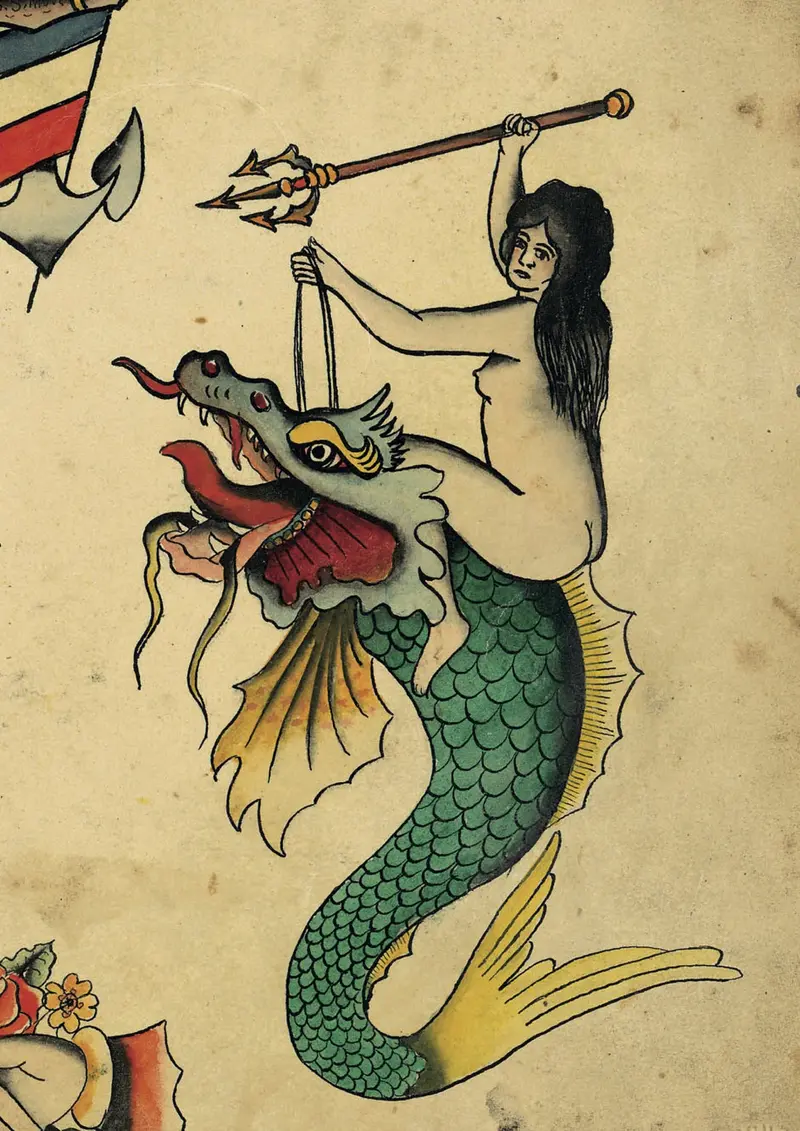[Translate to English:] text 1
Tattoo patterns are signs: of self-representation, affiliation, and identity. How exactly the body is designed depends on the respective cultural and social context. The human body is used, for example, as a means of expressing kinship. Also, by marking the skin, personal interests such as music taste, political stance or one’s first true love are shown. Skin patterns are also found on material products that often reflect the ideology of a community or a sense of belonging to a group. Even Tilesius of Tilenau (1769-1857) found that the patterns engraved on vessels, instruments, and tools corresponded to the signs placed on the body, such as the patterns on the shells of the Marquesas Islands, or the scarification patterns on the vessels of the Kuba in the Congo region.
Patterns and motifs also reflect complex exchange and appropriation processes. Seen here is Tapa, a bark cloth from Tonga, which is an example of the centuries-long exchange in the Pacific region. Tapa has the practical application as clothing and plays a major role in ceremonial transactions and rituals.

